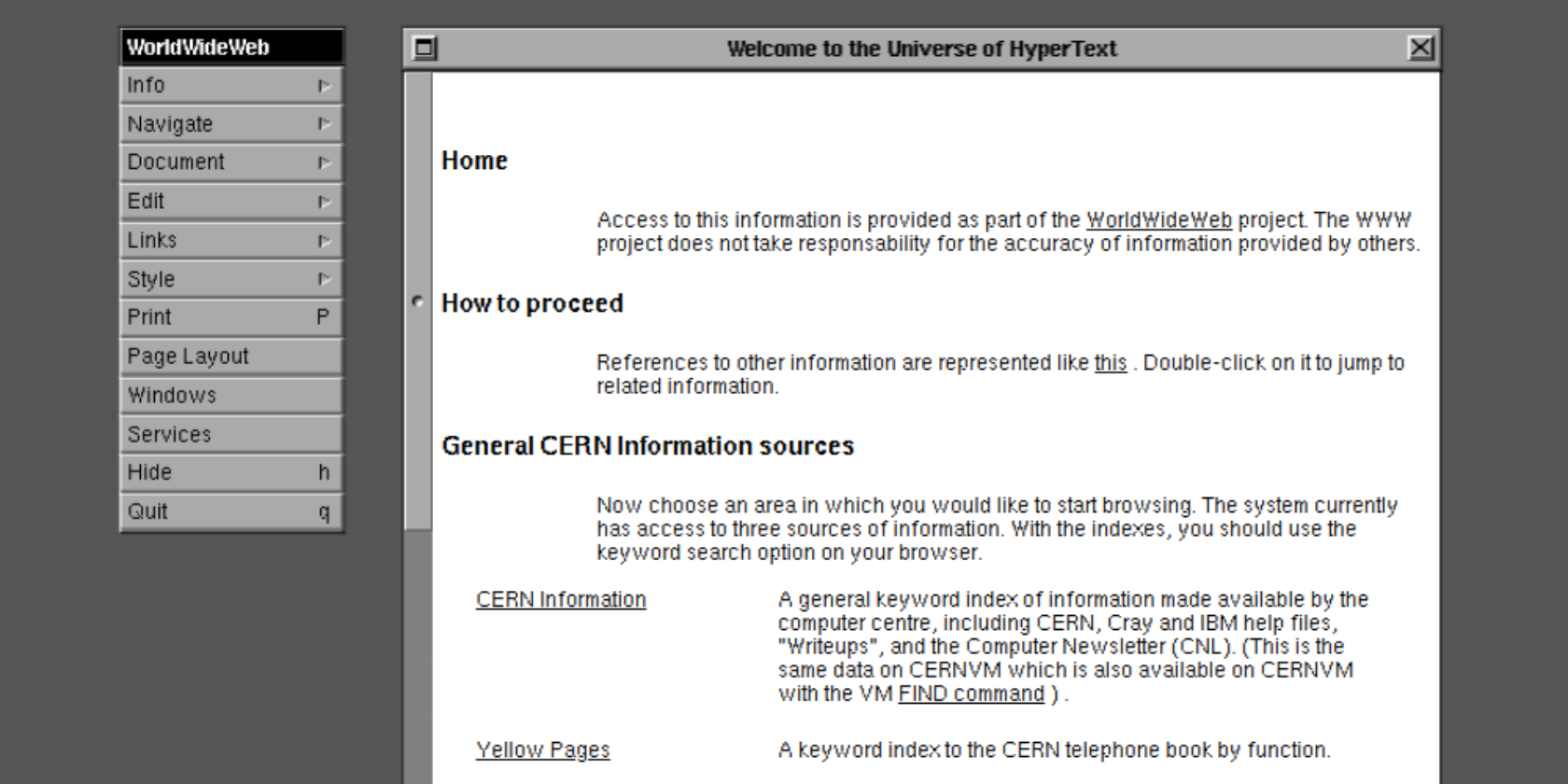
CERN (the European Organization for Nuclear Research) has rebuilt what was essentially the first web browser in the world. This means you can now see what surfing the World Wide Web was like back in 1990, using an application fittingly called WorldWideWeb.
Tim Berners-Lee Created the World Wide Web
As most people already know, the web was born in a lab at CERN. In 1989, Tim Berners-Lee wrote a proposal for “a large hypertext database with typed links”. By the end of 1990, all of the necessary elements we still use today were in place.
This included HTTP, HTML, server software, a web server, and the first web pages. And to navigate it all was an application called WorldWideWeb: a web browser and web editor. And now, to celebrate the 30th anniversary, CERN has rebuilt WorldWideWeb.
CERN Recreates the WorldWideWeb Application
You can try WorldWideWeb for yourself right from within the browser you’re currently using. Just open this page and you’ll see what Tim Berners-Lee and his colleagues were faced with in 1990. Except there were only a handful of pages to actually visit then.
What’s immediately obvious is the lack of color. There are also no images of any kind, let alone the videos, GIFs, and emojis we all take for granted these days. Most strikingly, there’s no address bar, so you’ll have to jump through some hoops before surfing the web.
Want to know what it was like to browse the web in 1990? A team at @CERN has rebuilt the original WorldWideWeb browser, which you can explore within your own browser.
Try it here ?? https://t.co/sh8G62HZIR pic.twitter.com/qujdSFSKOz
— The Web Foundation (@webfoundation) February 18, 2019
It’s actually not that difficult once you know how. Just launch WorldWideWeb, select “Document” from the left-hand sidebar, click “Open from full document reference”, type the URL you want to visit into the “Reference” field, and then click “Open”. Et, voila.
If trying the first web browser ever created whets your appetite, CERN has more resources for you to explore. There’s a potted history of the technology, a timeline of development, a guide to using the browser, and a look at the code underpinning it all.
The Incredible Evolution of the Web Browser
It should go without saying that the first web browser isn’t a patch on today’s modern browsers. You can certainly see the through line connecting WorldWideWeb to Chrome and Opera, but the evolution of the browser over the course of 30 years is astonishing.
While technology is continually progressing in a forward direction, it’s important to look back occasionally. With that in mind, once you stop playing with WorldWideWeb, why not read about the history of other geeky things, and visit old websites from the 1990s.
Read the full article: You Can Now Try the CERN Web Browser From 1990
from MakeUseOf https://ift.tt/2NgMOoD
via IFTTT
No comments:
Post a Comment